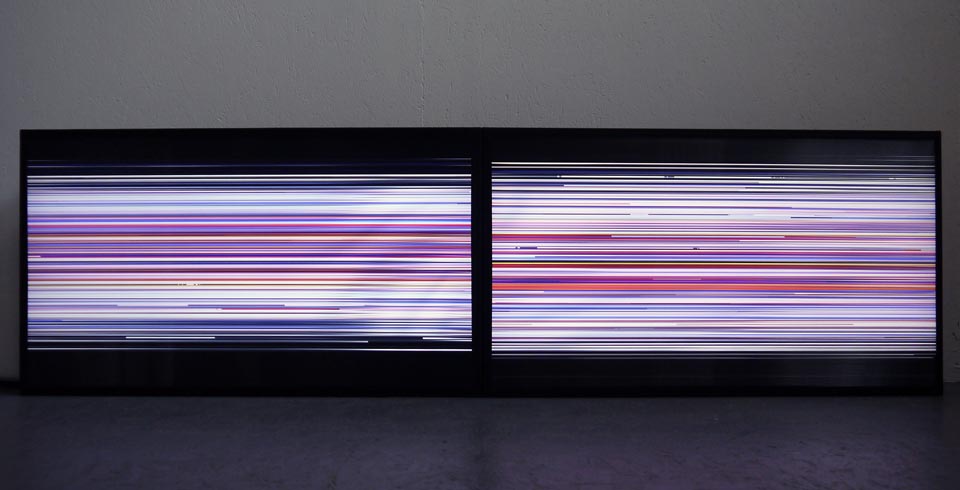The artist I chose to research is James White. He was born in 1977 and calls Dartmouth, Nova Scotia, Canada his home. He began his professional design career in 1998. His personal projects have gained recognition in the idustry and led him to working with Toyota, Universal Music, MTV, Google, Wired and other clients. He now mostly works on graphic pieces.
He has a very retro style and likes to use a lot of bright neon colors in his pieces to give his work that 80's sort of feeling to it. After working with Photoshop and Illustrator I really admire when I see a piece that looks so simply made and flows with the same type of style through out the whole piece. This one in particular uses all of the lights and dark's to compliment each other and make the style look like almost like a logo that could have been from a company in the 80's.

He really likes to do remakes of old movies and characters that he likes and it can be seen by this blade runner poster that he made. This poster captures everything that he like to focus his pieces on. He likes the 80's style theme and much of his work is using the dark hues, like the dark blue and greys in this piece, contrast with the light bright colors in the piece to make all of subjects stand out. I'm fascinated by how simplistic all his works look because I know how much work must have gone in to making something like this simple looking poster. I think that after looking through all his works, I want to make a somewhat interactive website that's more art-like and not so much a website that is built for a company.
.jpg)











![[ENG] CensorZip explores the notion of censorship in China and built a sensational environment that deals with the legibility of images coming from censored web pages. The mass of...](http://dombis.com/wp-content/uploads/2012/12/1_CensorZip_1_r-230x160.jpg)















-large-picture.jpg)




